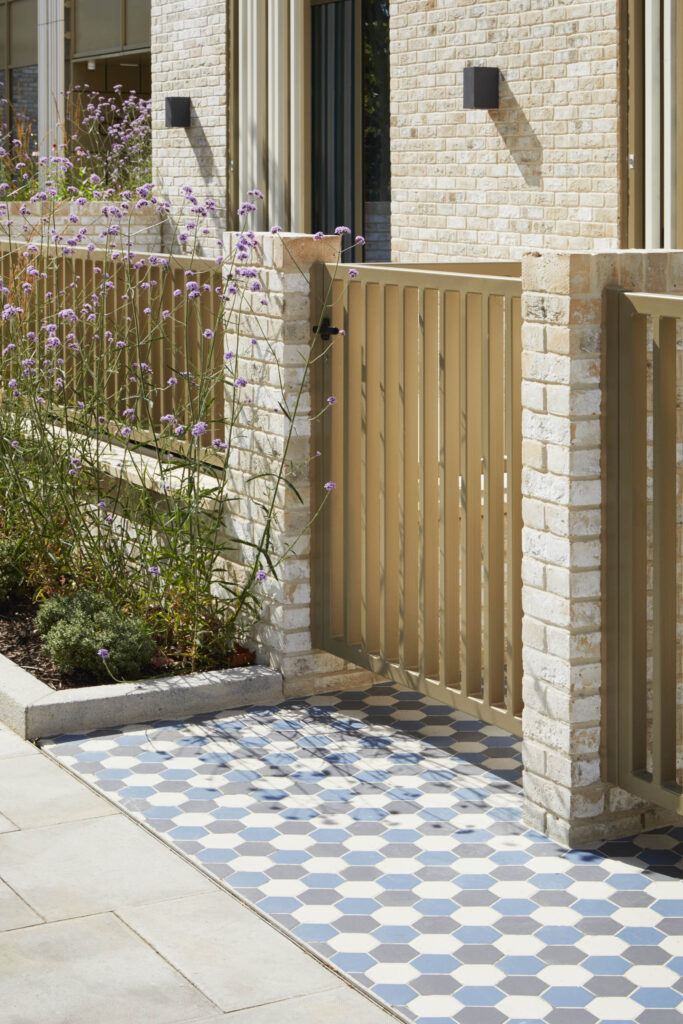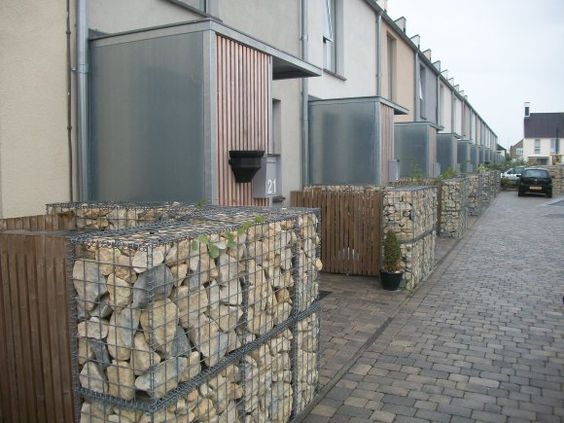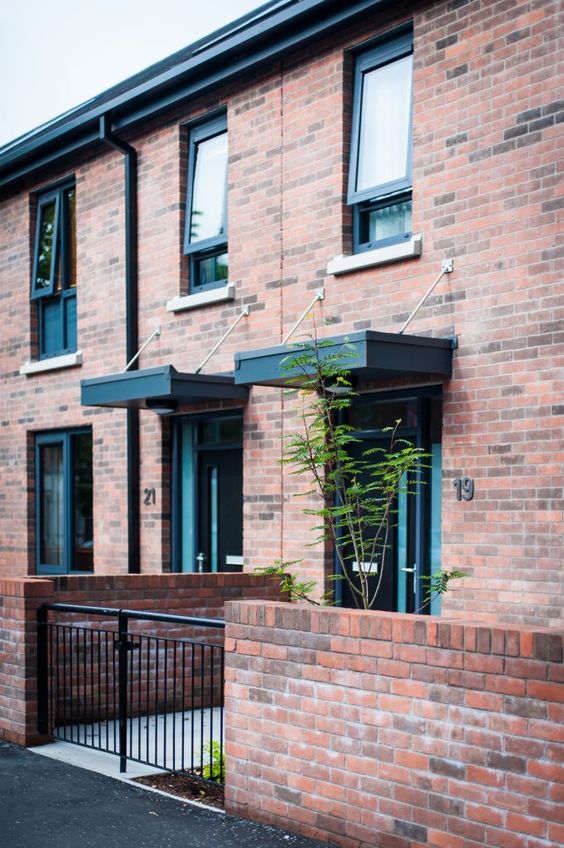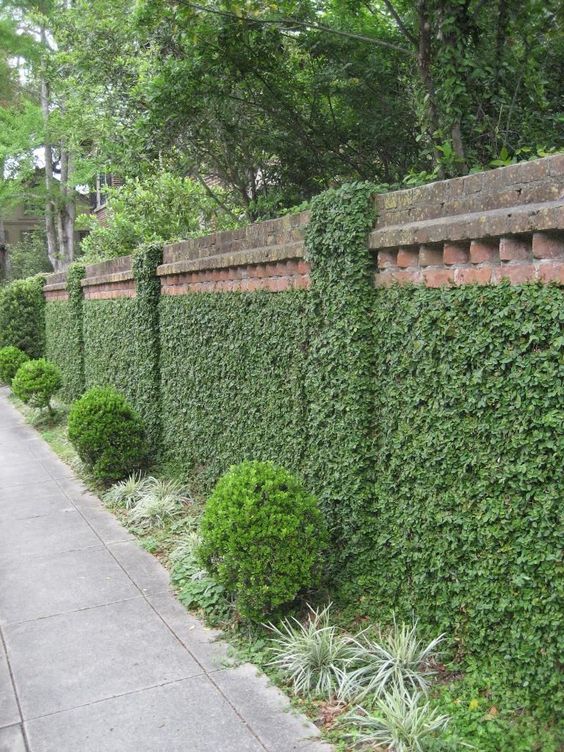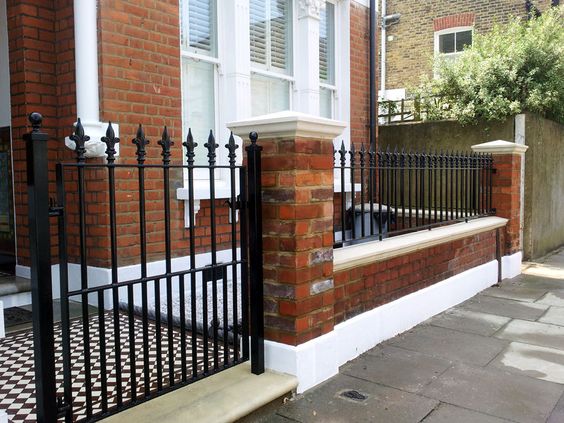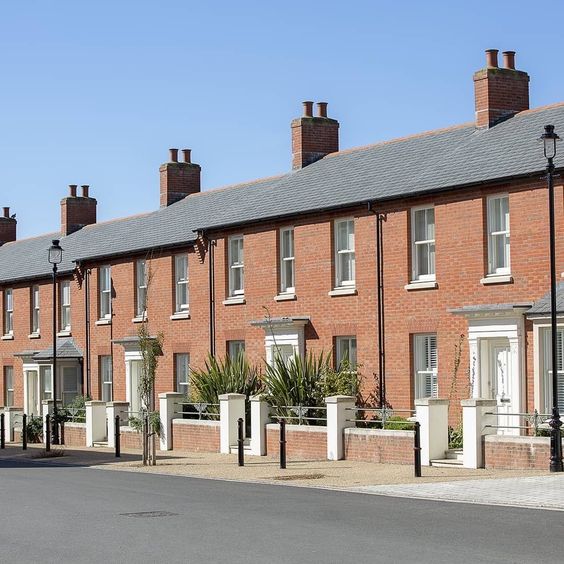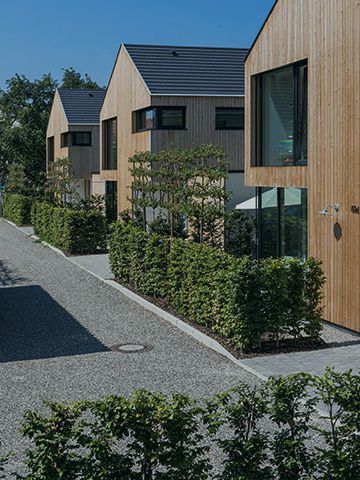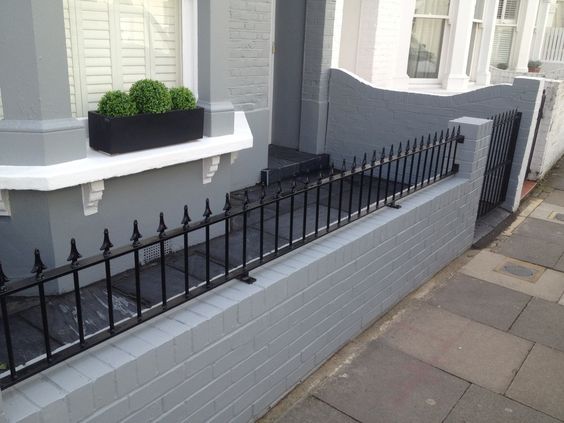Through a landscape and place-led approach, the Trafford Design Guide will set a new design standard for the borough. It will help shape the kind of places where people want to live, work and spend quality time by delivering more accessible, sustainable and beautiful development.
The guide aims to support Trafford by providing a comprehensive guide to help inspire and guide the delivery of high quality places to live.
The Trafford Design Guide should be read alongside the National Planning Policy Framework, the Design: Process and Tools National Planning Practice Guidance, the National Design Guide, the Trafford Local Plan, any design-related policies contained within a neighbourhood plan (if there is a neighbourhood plan) and any approved masterplans or design codes for the area, settlement or a particular site.
Informed by consultation, research and best practice, this Design Guide focuses on the principles and outcomes needed to create and enhance high-quality places to live and work.
It is intended to inform every stage of the design process, from appraisal of the site through to the submission of a planning application and delivery.
Following the principles and requirements will ensure that your design approach meets with the aspirations of the Council and the wider Trafford community, providing applicants with the best chance of achieving planning approval. good quality places to live and work.
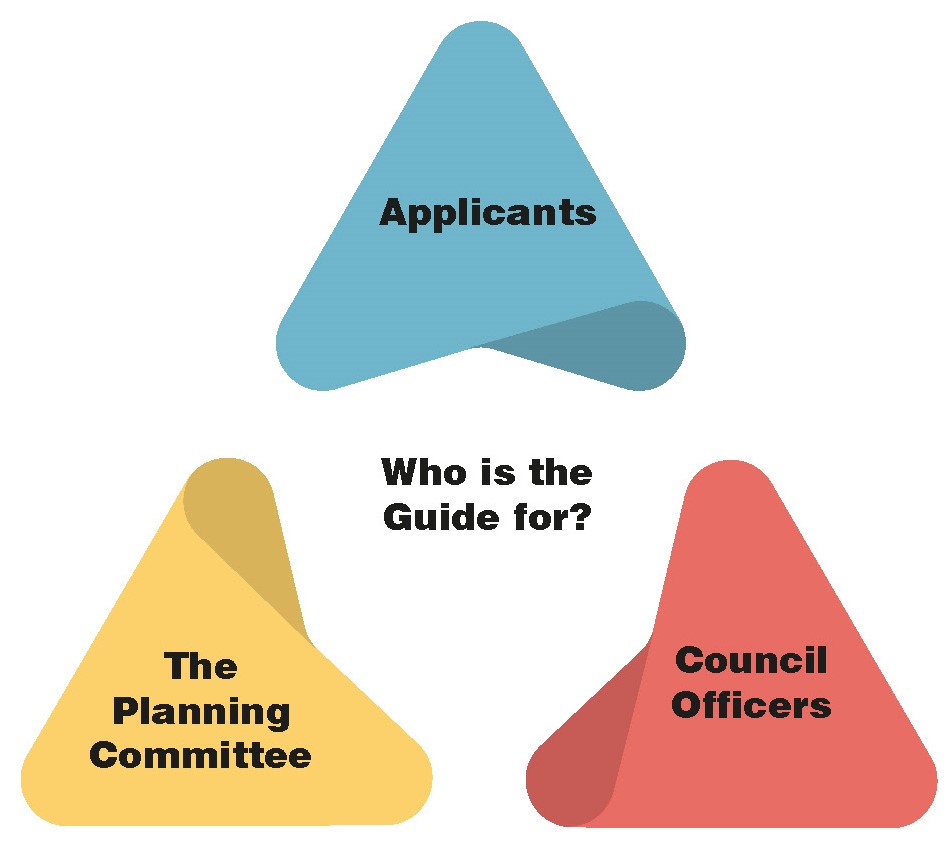
The diagram explains that the guide is aimed at developers, designers and decision makers in Trafford ensuring that what is expected of design is clearly set out and that consistent advice is given.
Table of Contents
Links to Relevant Guides
What are the benefits?
There are a number of intended benefits in the creation of a design guide for Trafford:
• It will provide clear, transparent and consistent guidance.
• It will inspire high standards in design and placemaking.
• It will speed up the approvals process.
How will it be used?
The Trafford Design Guide is intended to inform the design and planning processes to embed the principles of good design in all planning applications within Trafford.
The aim is to assist developers to achieve an overall aspiration of good design outcomes through the appropriate planning channels by providing key components of good urban design that will help to determine whether a place will function well in providing a safe, attractive and desirable environment in which to live, work and play.
Who is the guide for?
The Design Guide will inform development projects of all sizes and stages and therefore is intended to be read by a wide range of stakeholders, however three main groups can be set out below.

Applicants
From individual new home projects through to large new urban extensions and settlements. The document is intended to give residents, designers and developers clear guidance on what is expected of every element of the project.

Planning Officers
The Guide will be used as a tool by Trafford Borough Council planning officers to respond to the pre application and planning application process. The guide will help ensure consistent design advice is provided throughout the stages.

Planning Committee
The Guide will also be used to inform Councillors during their decision making at committee, ensuring consistency in decision making.
The planning process
The Guide will sit as a Supplementary Planning Document that should be referenced by new applications made to the council, which means it will be a material planning consideration that is consistent with existing national and regional planning policy aims.
The Guide forms a material consideration in the determination of planning applications and it should be read in conjunction with the adopted development plan.
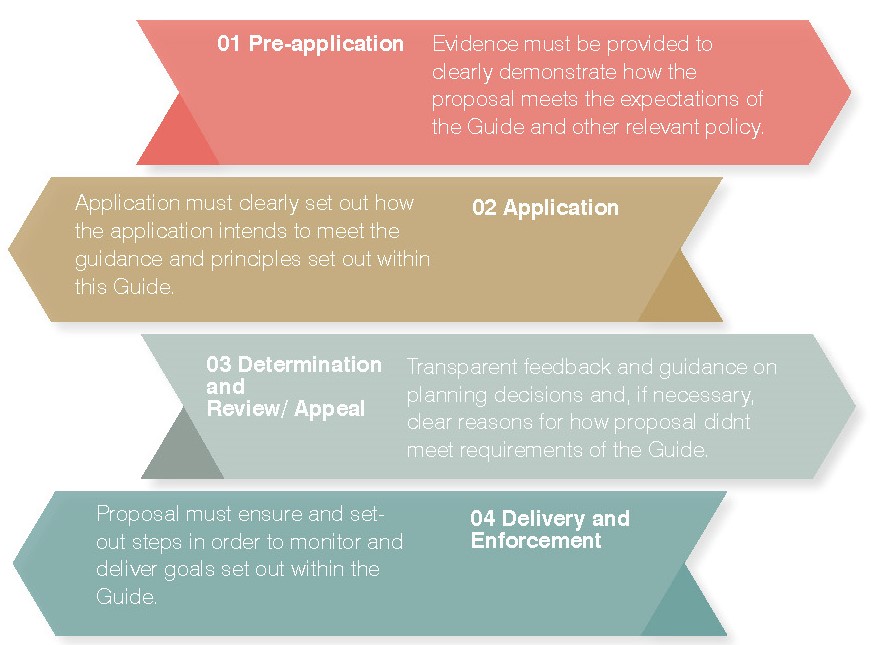
The diagram shows that the guide is expected to be referred to at all design and planning stages, with evidence to be provided on how proposals and decisions respond to the guidance contained within in.
Design Codes
In addition to the guidance set out in this document, more detail may be required for larger development projects, where the use of design codes might be appropriate. Design Codes should be informed by this Guide as well as the National Model Design Code both in terms of their aims and content.
Whilst Design Codes should provide more certainty for projects, setting out what is expected in a particular development site, they should generally be strategic, aiming to define key placemaking qualities and ensure these are delivered through the detailed design process.
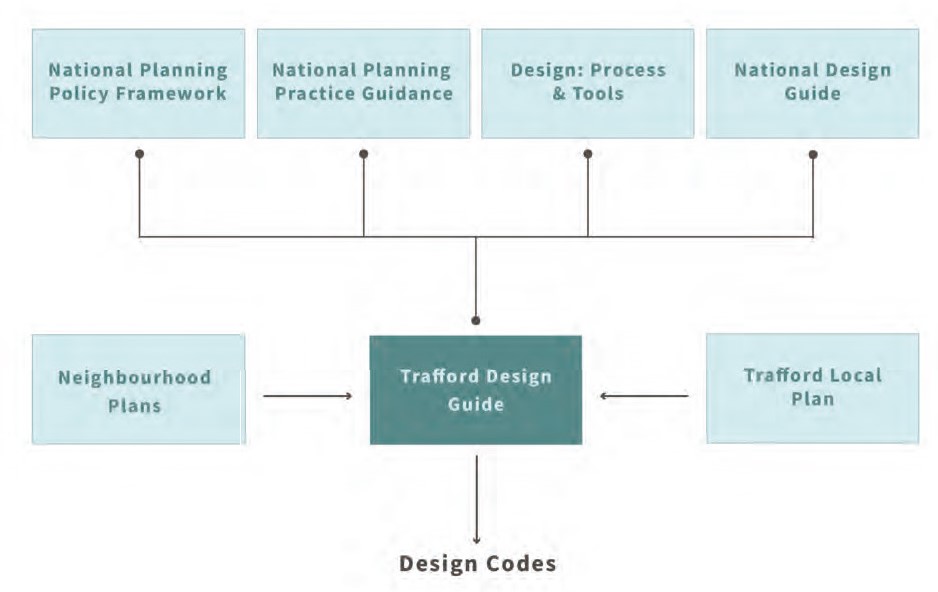
The diagram is a flow chart showing where the Trafford Design Guides sits below National Guidance. Neighbourhood plans and the Trafford Local Plan feed into the design guide. Design Codes are site specific detailed codes below the generic design guide.
The Value of Good Design
The buildings and spaces that we live, work and spend time in affect us all. Well-designed places influence our every day experience and determine our quality of life. They harmonise the collection of buildings, lifting our mental wellbeing, provide activities, and connect us to one another, as well the surrounding environment.
It is not merely aesthetic but experiential and can last long in the memory. Achieving high quality design of places is fundamental to the development process if we are to provide for the new residents, communities and visitors who will use the space.
Good value design have a number of key characteristics which, when woven together, create its inherent qualities. Good design should leave a sustainable legacy, and they can become solutions to key issues such as climate change and adaptable to future trends.
Good design should be inclusive, cohesive, enjoyable and, therefore, sustainable. Instilling engagement within quality design will create places that the community cherish, ensuring they will look after it as if it were their own.
Through context-driven approaches, good design shall address local needs and issues and provide fit for purpose solutions that make it an attractive and distinctive place to be for users.
By making the built form coherent with surrounding uses and scale, establishing an appropriate relationship that is in lieu with local patterns of development.
Good value design informs many multi-faceted characteristics such as the layout, scale, form, appearance, materials and landscape which entail good experiential qualities. It is vital that we get it right.
The value of good design can:
Improve quality of life and wellbeing

Define the character and
quality of a place

Create a focal point within a community place

Improve quality of life and wellbeing

Increase activity and economic activity within a place

Create inclusive and welcoming space and places

Encourage civic pride and engage the community

Provoke interest and engagement with the built environment

Encourage activity throughout the built environment

Previous


